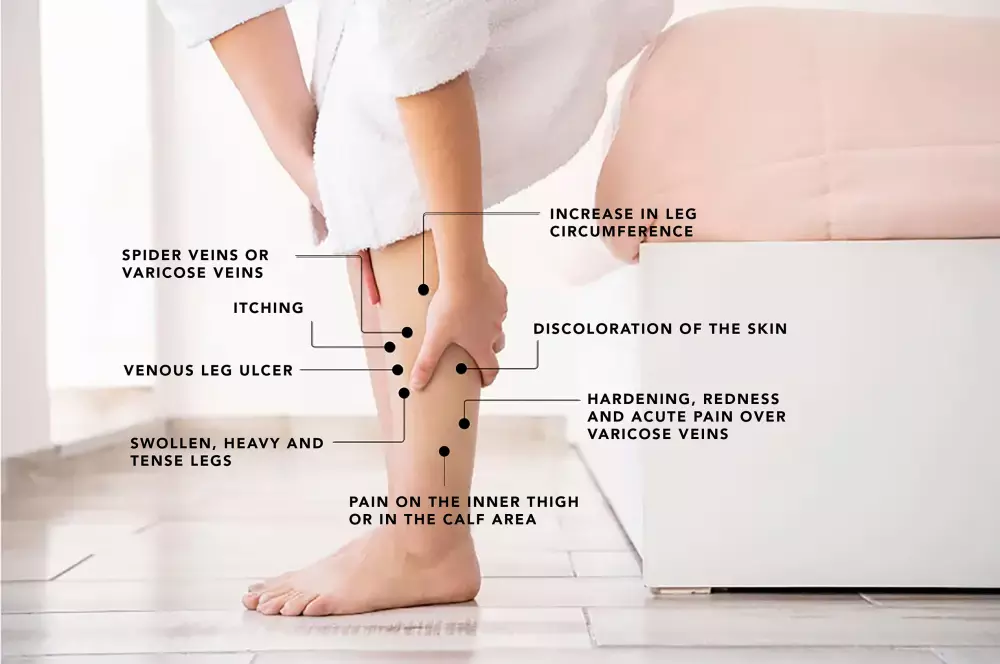Early detection of venous disorders: observe visible changes!
VENENCLINIC St. Gallen
9000 St. Gallen
VENENCLINIC Zurich
8004 Zurich
VENENCLINIC Chur
7000 Chur
VENENCLINIC Engadin
7513 Silvaplana
Vein disease often goes unrecognized for a long time and is usually only noticed when it is too late. If you check yourself regularly, you can recognize the onset of vein disease in good time. The necessary treatment measures can then be initiated at an early stage and consequential damage can be prevented. You should look out for the following visible changes:

The appearance of spider veins or varicose veins is an indication of venous insufficiency or the onset of venous disease. Even if you do not yet have any symptoms, you should be examined by a specialist. This is the only way to rule out advanced venous disease requiring treatment, the severity of which is not always visible on the skin.
Swelling of the legs is easily noticeable by the fact that you can hardly get into your shoe, the sock leaves a mark etc. Especially if the swelling occurs on one side, it can be a warning sign of venous disease. These changes, which may also be due to heart or kidney disease, should definitely be shown to a doctor.
Brownish pigmentation of the skin on the lower leg, which resembles the complexion after extensive sunbathing, may indicate chronic venous congestion.
Itchy skin on the legs is often caused by venous congestion and can lead to dry, scaly skin and inflammation (eczema). In many cases, itching is a sign of severe venous disease.
These changes are often superficial phlebitis, which is usually harmless but uncomfortable. Be sure to consult a doctor to prevent complications.
In most cases, a venous leg ulcer is caused by diseased veins. Do not rely on your "home remedies", but see a doctor immediately. The sooner adequate treatment is started, the less damage will be done to the skin and the quicker the leg will heal.
These symptoms are typical of vein problems and are often accompanied by the visible changes to the legs mentioned above.
These symptoms can be a warning sign of thrombosis or phlebitis, which is why you should definitely see a doctor.
We understand that an aesthetic treatment needs to be carefully considered. We are therefore happy to take the time to answer all your questions during a no-obligation initial consultation. Arrange your consultation appointment at one of our VENENCLINICs today.
If you would like a brief online preliminary clarification before your consultation, you can also contact us by e-mail.
No matter which way you want to contact us - we look forward to hearing/reading from you!